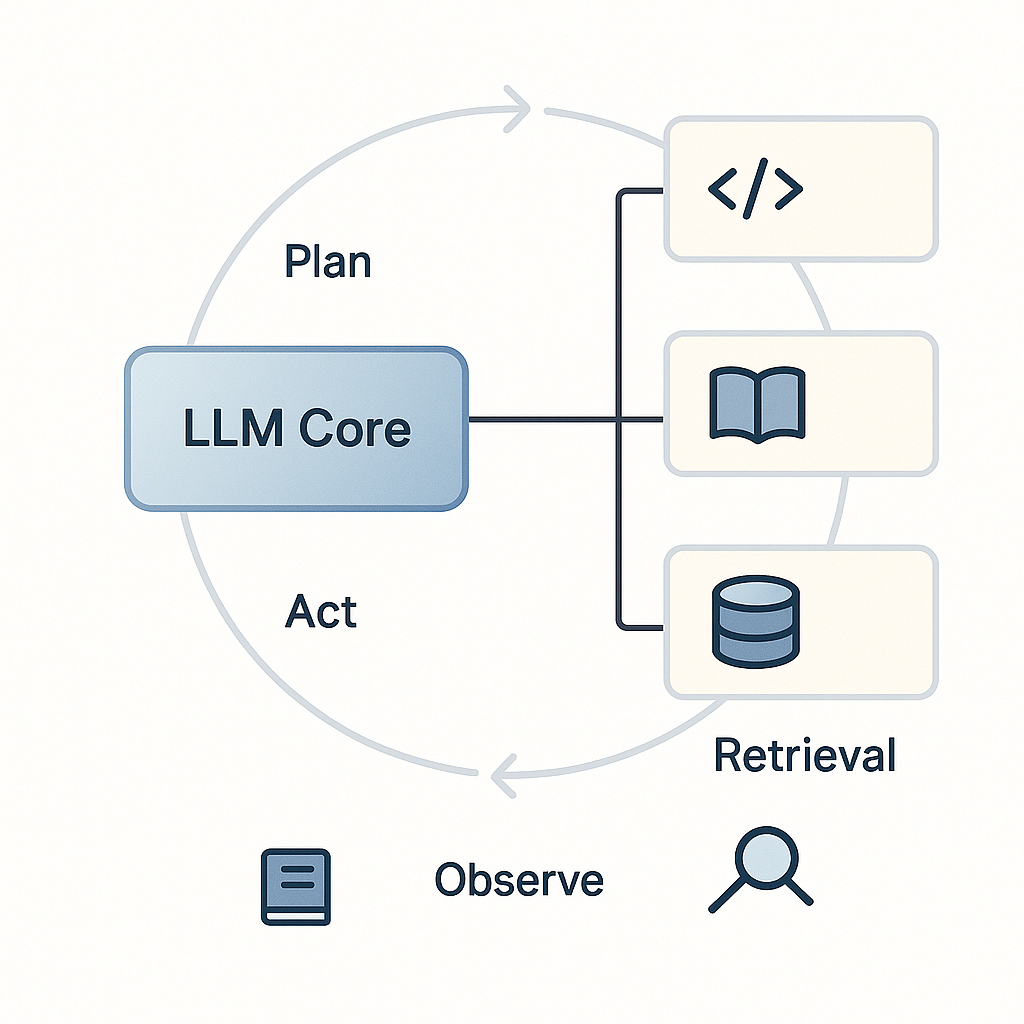Physical Address
304 North Cardinal St.
Dorchester Center, MA 02124
Physical Address
304 North Cardinal St.
Dorchester Center, MA 02124

AI is rapidly evolving beyond simple chatbots into something far more powerful: AI agents. These goal‑driven programs don’t just answer questions—they take action, use tools, and make decisions on our behalf.
🎙️ Listen: AI Agents Explained
💡 Quick Definition: An AI agent is software that perceives its environment, reasons about what to do, and executes the steps needed to reach a goal—without being told each step in advance.
Read on to learn what AI agents are, how they work, where they’re already used in business, and a few beginner‑friendly coding projects so you can build your own. (Estimated reading time: 6 minutes.)
AI agents differ from ordinary chatbots in one crucial way: agency. A chatbot returns a text answer; an agent can also act—for example, calling an external API, updating a database, or sending an email.
🧠 Think of it like this: A chatbot is a helpful librarian who hands you a book. An AI agent is a personal assistant who reads the book, books your trip, and sends you a reminder—without you listing each task.

An AI agent usually pairs a large language model (LLM) with three super‑powers:

⚠️ Keep it Simple: If one well‑crafted prompt solves the problem, skip the agent. Agents cost more (extra API calls) and can wander off track.

| Level | Project Idea | What You’ll Learn |
|---|---|---|
| ✅ Beginner | Weather Assistant BotAsk “Do I need an umbrella in Paris?” and the agent calls a weather API. | Tool integration + basic reasoning |
| ✅ Beginner | To‑Do List ManagerChat to add tasks; agent stores them in memory and summarizes. | Using memory & state |
| 🚀 Intermediate | Wiki Research AgentAgent fetches data from Wikipedia and writes a summary. | Retrieval + summarization |
| 🚀 Intermediate | Math SolverAgent detects math queries and calls a calculator function. | Routing logic + tool execution |
| 💻 Advanced | Code Fix BotAgent reads a bug, edits code, and runs tests until green. | Iterative reasoning + evaluation |

💡 Tip: Frameworks like LangChain or LlamaIndex make tool‑use easy—but a plain script with a loop works too. Start simple!
AI agents are already boosting productivity in support desks, codebases, retail ops, and clinics—and you can start experimenting today. Pick a project above, spin up a small prototype, and share your results.
Ready to dive deeper?